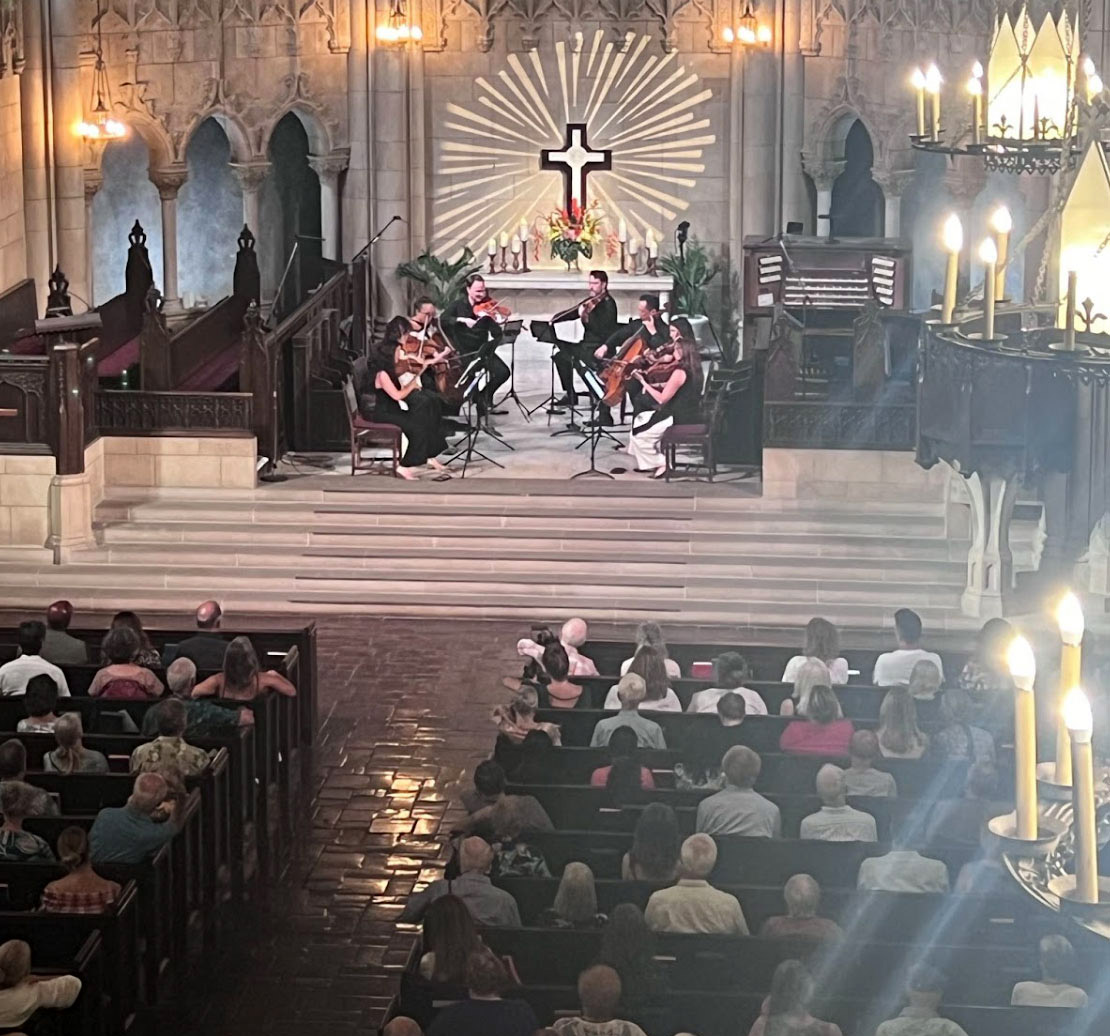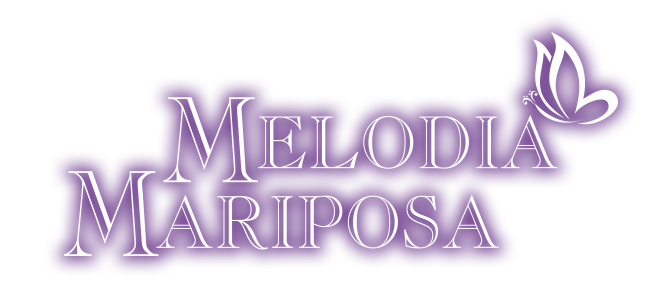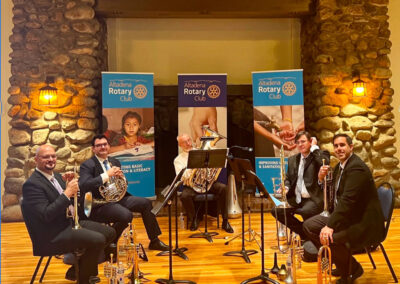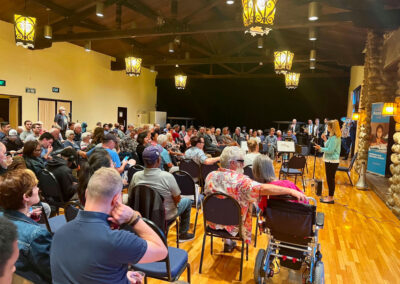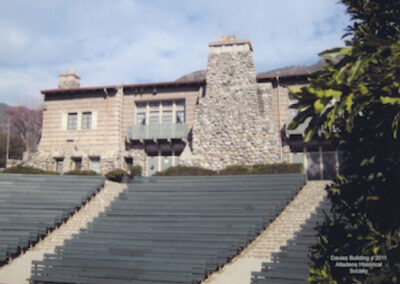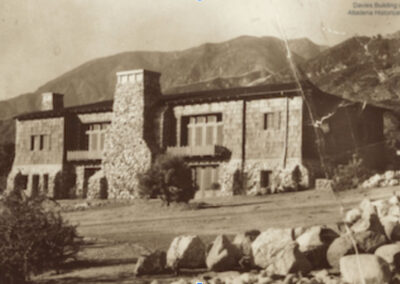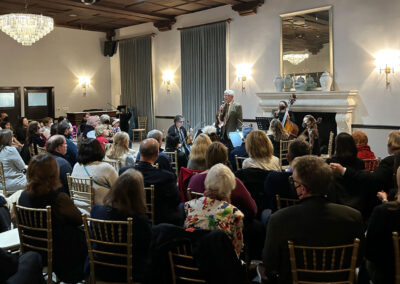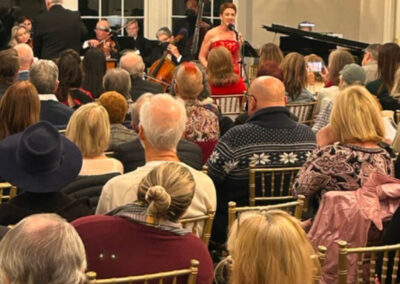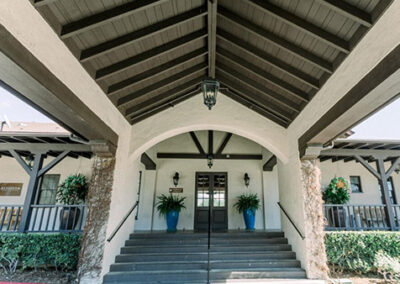Melodia Mariposa Venues
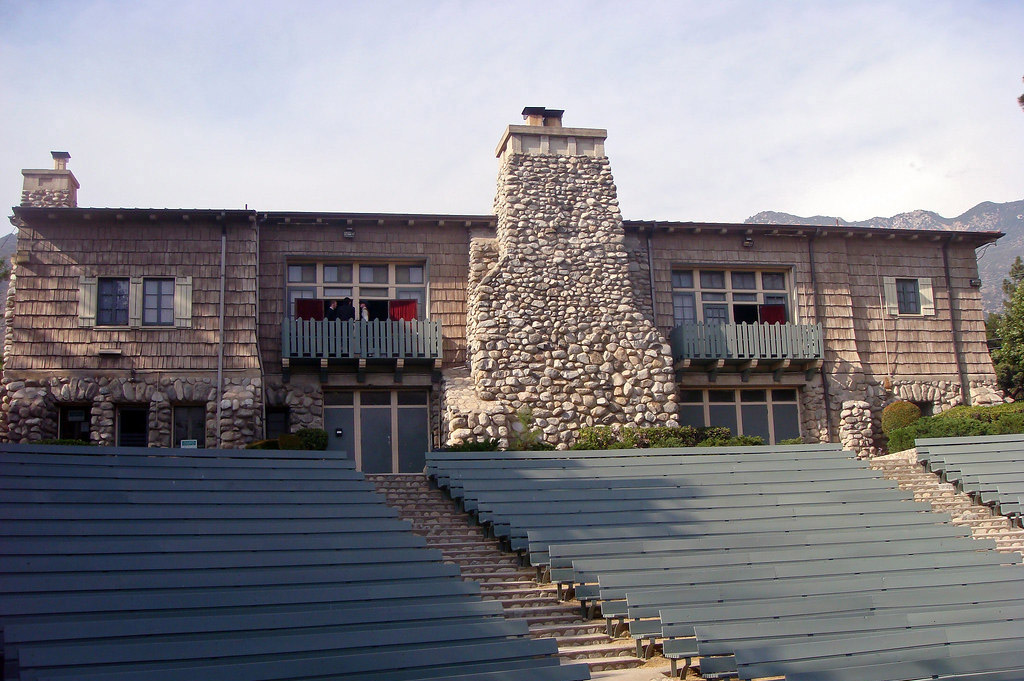
William D Davies Building
568 Mount Curve Ave E
Altadena, CA 91001
The Davies Memorial Building was built in the early 1930s when locals from the Altadena Community Theatre Association applied for government funds from the Works Progress Administration. They wanted to create a community center that contained a real theatre – thinking that a live theater would generate some income for the community by providing jobs for unemployed residents. They also persuaded Los Angeles County to use a former nursery at Lake Avenue and Mount Curve Street to create a park and home for a theater company.
The rustic lodge-like two story structure, built with native cobblestone, cost about $50,000 to build and the above photo was taken during construction. It was completed in 1934.
William D. Davies, who was President of the Altadena Improvement Association loaned $4,000 for furnishings and equipment was donated by Altadena Women’s Circle, Altadena Women’s Club among others. The famous author (and Altadena resident), Zane Grey, reportedly donated funds for lighting the first performance, “Peter the Great.”
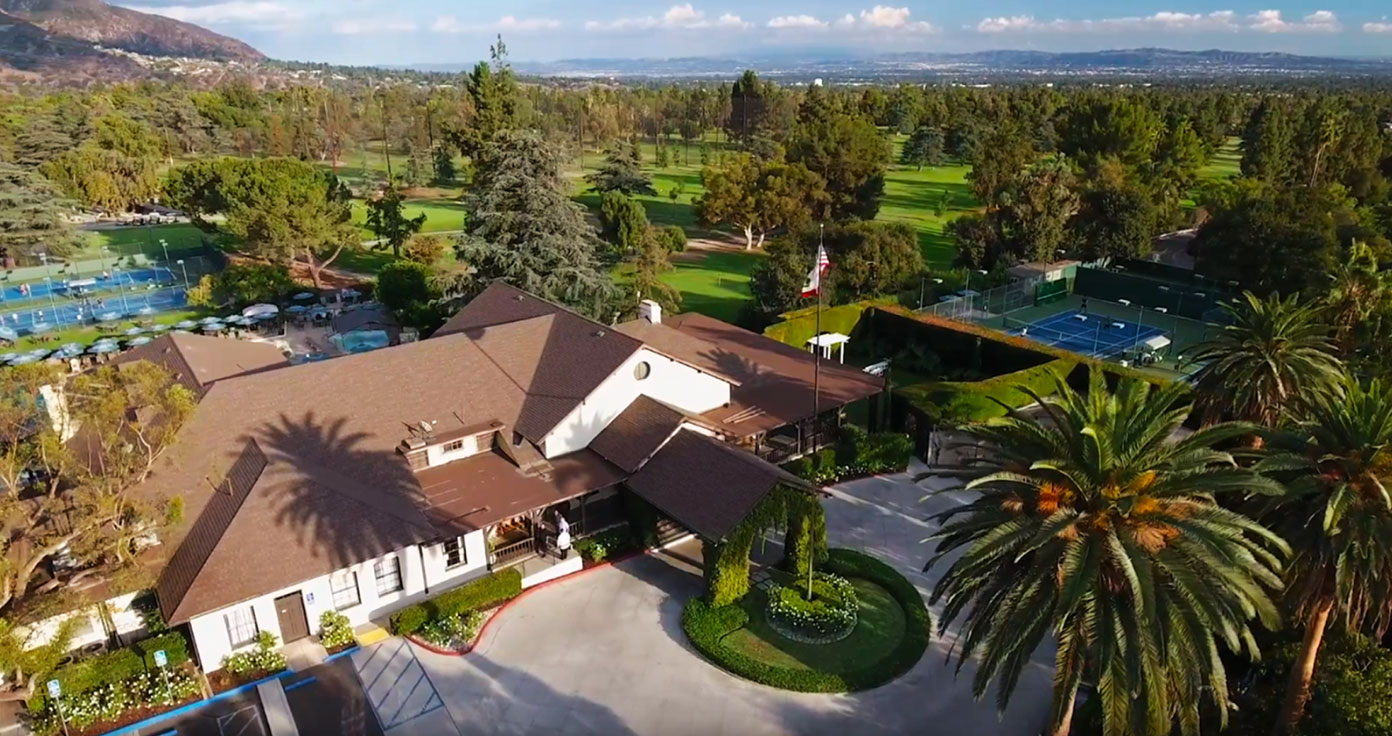
Altadena Town and Country Club
2290 Country Club Dr
Altadena, CA 91001
The Altadena Country Club, as it was originally known, was established in 1910 and had its grand opening on December 28, 1911. With its 18-hole golf course and two tennis courts, membership grew to 147 by 1915. The Clubhouse expanded its footprint in 1916 and added a 25-foot long x 8-foot deep swimming pool.
By 1917, WWI had taken its toll and membership dropped by 50%, nearly resulting in its closure. By 1920, a group of members took over the struggling Club and changed the name to Pasadena Golf Club. Trying to keep with the growing interest in golf, the course was rebuilt and was noted for having the largest tees and greens on the Pacific Coast, along with a “traveling sprinkler.”
A thriving Club by 1927, another series of renovations took place which added additional square footage for ballrooms, dining, and balconies to the existing clubhouse.
MORE
The Club would continue to grow and prosper until the crash of the stock market in 1929. By 1932, the Club was gasping for air and entered into a trusteeship, with foreclosure looming. It was renamed the Altadena Golf Club and became a public facility, a pay for play course, and rented out its clubhouse for parties and events.
The start of WWII created another financial struggle for the course. In 1946, 60 acres was sold to the County of Los Angeles for what would become the existing 9-hole Altadena Golf Course. The east side of the course, which stretched to Allen Avenue, was sold to a developer, and a group of members led by Rollin Dixon purchased the remaining clubhouse, pool, and tennis courts (approximately 5 ½ acres of property) for $50,000.
1946 saw the birth of a new club, the Altadena Town and Country Club, which has remained to this day.
The Club plays an important role in the community, hosting many parties and galas and supporting the efforts of many schools and non-profits in the area – including partnering with Melodia Mariposa to host chamber concerts and our Annual Holiday Concert in thei wonderful Victorian Ballroom.
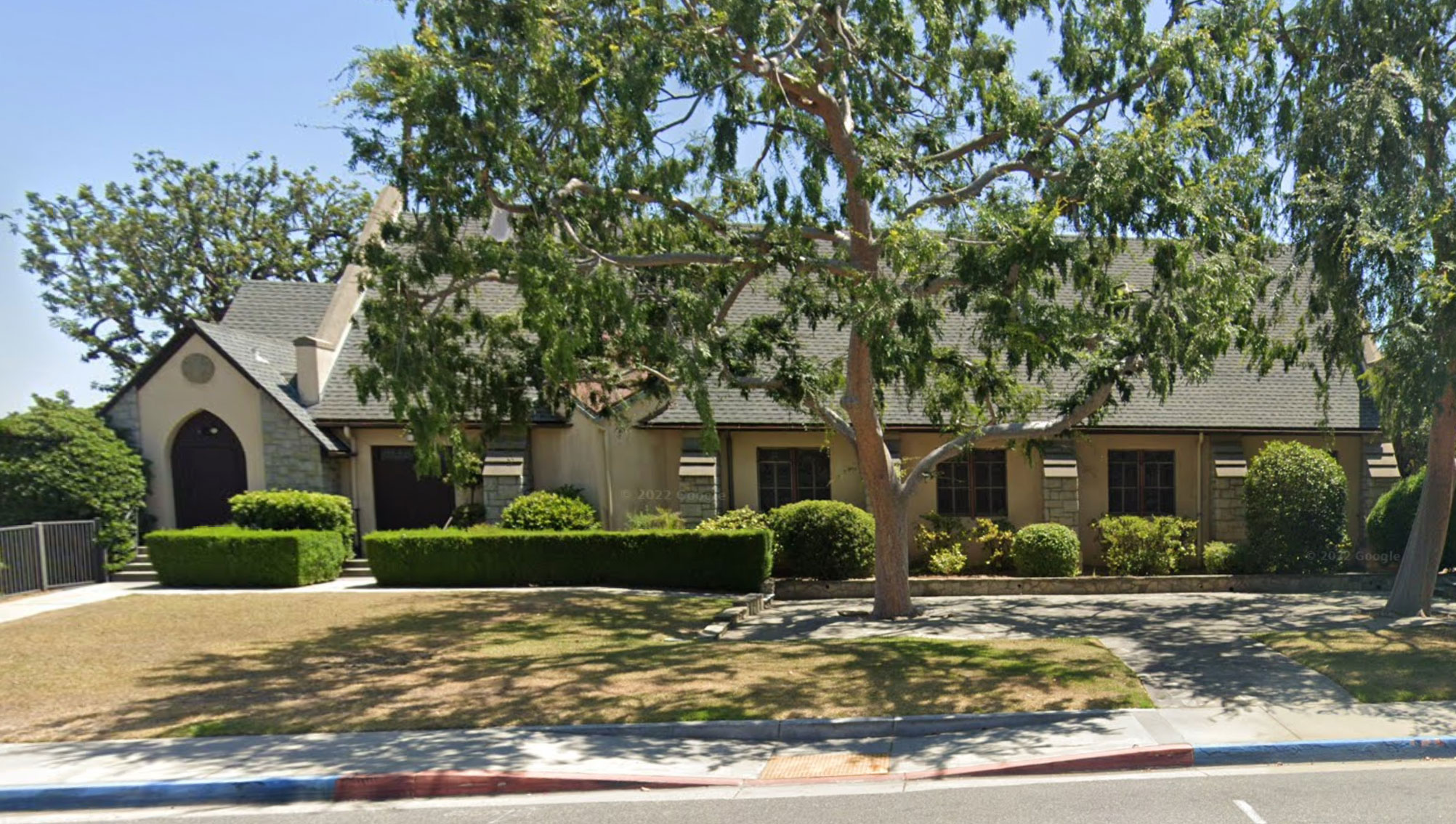
St. Mark’s Church
1014 E Altadena Dr
Altadena, CA 91001
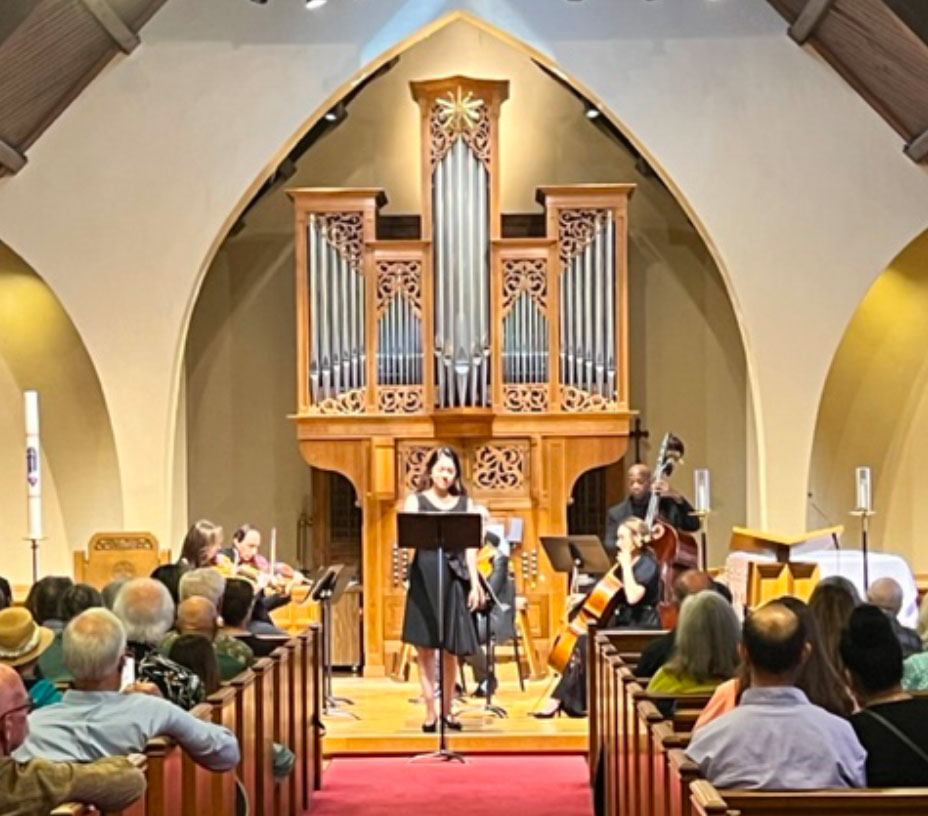
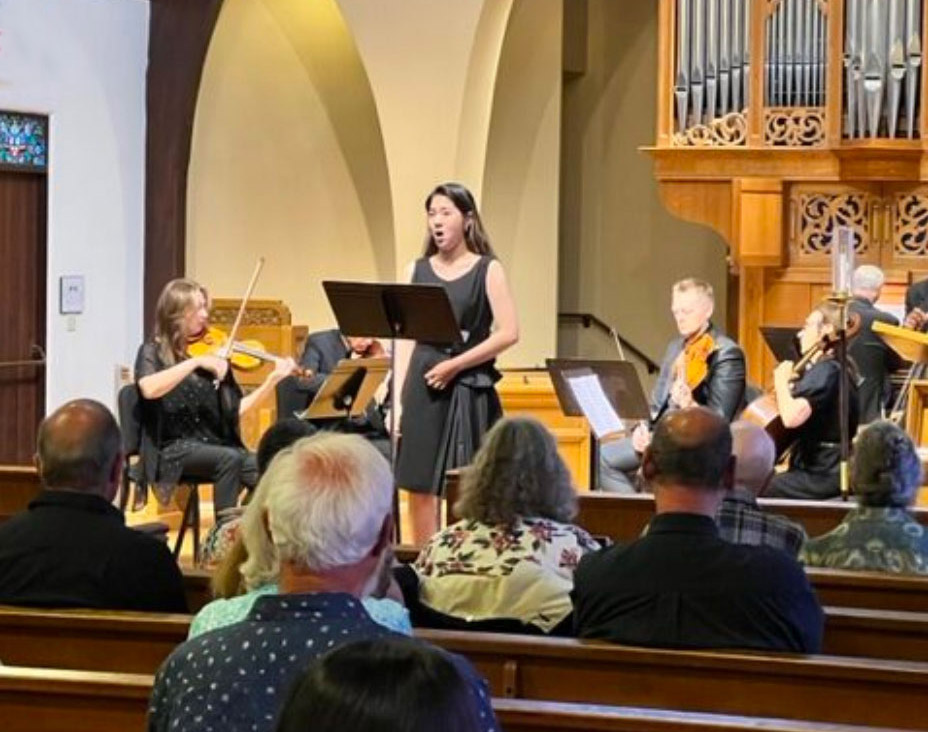
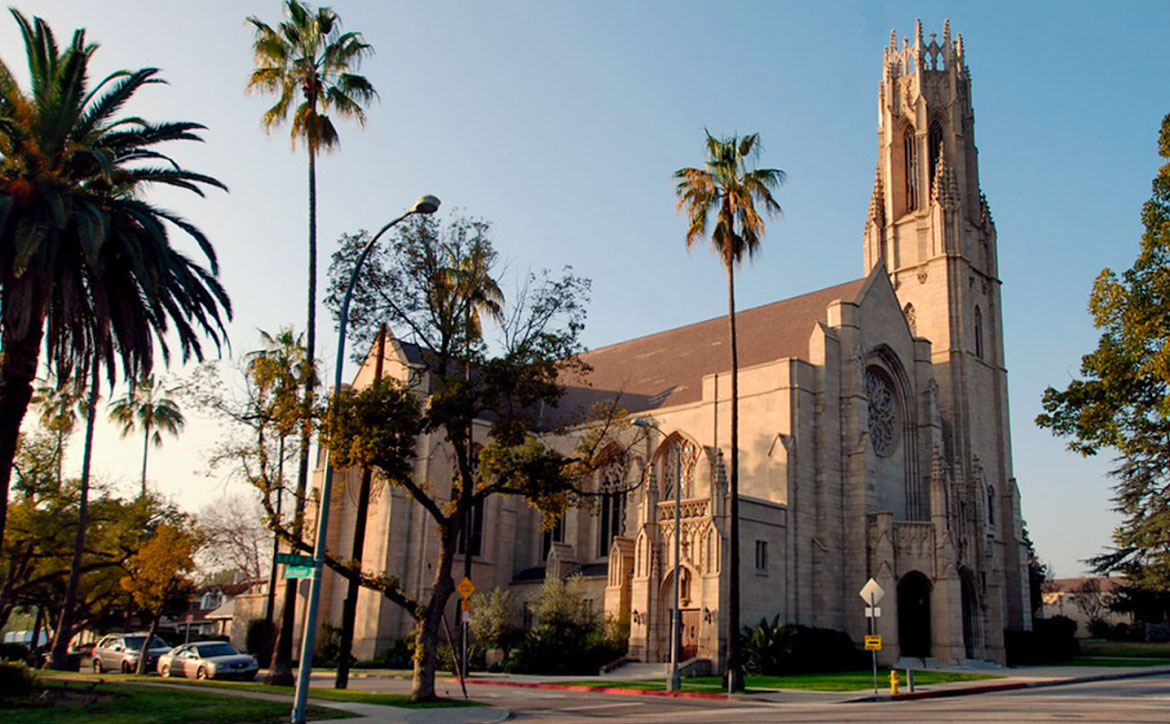
Westminster Presbyterian Church
1757 N Lake Ave, Pasadena, CA 91104
Westminster Presbyterian Church Pasadena began in 1906, when a group of pioneering Presbyterians who originally worshiped at the Pasadena Presbyterian Church decided to extend its activities to the Northeast area of Pasadena. After a small chapel was built, David McPherson, a church member and an engineer who built, with Thaddeus Lowe, the Mt. Lowe Railway, worked to see the church relocated further north on Lake Avenue in Pasadena. On December 11, 1908, a new site was purchased and soon after the chapel (known as Dodge Chapel) was relocated. The first service in the new location at Lake Avenue and Woodbury Road was held on January 31, 1909.
The congregation continued to grow and serve the community and in 1926, plans were laid to build a new, larger, sanctuary. The building (seen today) was constructed with the assistance of renowned architectural firm Marston, Van Pelt and Maybury and contractor Clarence Day. Judson Studios was contracted to provide stained glass windows. The cornerstone was laid on October 23, 1927.
MORE
November 25, 1928 saw the dedication of the new church. Built in the French Gothic style of architecture, it has arched windows, a tower, a cruciform plan, and a stone exterior. Influenced by the grand cathedrals of Europe, the main entrance was inspired by the Cathedral at Metz and the Eglise St. Maclou in Rouen, which also inspired the design of the tower.
The three large Rose Windows (Emerald/South, Sapphire/North, and Ruby/East) are reminiscent of those in Beauvais and Amiens.
The tower, rising 150 feet above Lake Avenue, can be seen from miles away and serves as a beacon.
The organ was built and erected by the Reuter Organ Co. Its Great, Swell, Choir, and Solo chambers open on the north and south walls of the chancel, while the Echo chamber is in the tower opening into the gallery. The organ has 38 sets of pipes, with 2,678 pipes, ranging in length from 16 feet to a 1/2 inch; 71 speaking stops; 34 couplers;

